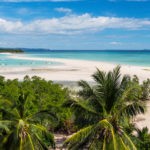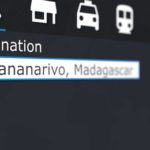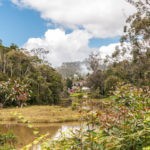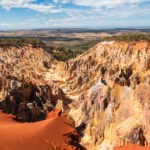Diving and snorkeling For every nature lover, Madagascar is a kind of holy grail. The second largest island in the world, located south of the equator in the Indian Ocean and separated from the East African coast by the Mozambique Channel, is known for its diverse and unique flora and fauna. But not only inland, but also in the maritime environment of the island, there is a variety of oceanic life that is second to none anywhere in the world. 34 species of dolphins and whales want to be discovered and admired along with 5 tortoise species, 56 shark species, 1300 different bony fishes and impressive coral reefs along the 4800 km long coastline of Madagascar.
The water temperature is about 28 ° C from September to June, around 23 ° C in July and August, and offers such excellent conditions for underwater activities. However, you should avoid the months January to March, as in this time heavy storms hunt on the island and most diving centers are closed. From May to December, however, there are optimal conditions for snorkelling and diving with a visibility of more than 30 meters in the water.
Probably the best known diving area is located in the northwest of Madagascar around the island of Nosy Be, which is called because of the diverse scents of local flora, the perfumed island. Snorkeling or diving is a must there. Visitors can expect a shining underwater paradise with turquoise water, cliffs and reefs full of snails, shells, giant tortoises and many species of fish such as stingrays and giant perch. Surrounded by numerous smaller islands, such as Nosy Tanikely, Nosy Komba or Nosy iranja, numerous dive sites can be reached from Nosy Be within half to three quarters of an hour by boat. The migration of humpback whales that passes by the archipelago from late August to early December is another oceanic highlight that can be experienced on Nosy Be.
If you drive south on the west coast, you will find several coral islets arranged in a row . Arctic pike and spiny mackerel, sharks and rays can be experienced here in their natural environment.
Still further south, approximately at the height of the city Toliara extends the offshore probably the most spectacular dive destination of Madagascar. The so-called Toliara reef is with a total length of more than 300 km probably the longest continuous coral reef in the world. It provides natural habitat for over 6,000 species of shellfish, fish, sharks and whales. Just north of Toliara, in the bay of Ranobe, there are two protected maritime areas that have been established there for conservation and research purposes. Colorful coral landscapes, moray eels, rays, parrot and batfish are there to the visitor.
Above the eastern coast of Madagascar, the island of Sainte Marie is a popular diving destination. Here too, you can see many coral reefs at a depth of up to 30 meters, and even one or the other wreck can be explored here. However, you can feel the traces of overfishing in the Strait compared to the West Coast lower biodiversity. The absolute highlight here is the humpback whale migration that travels between the island and the mainland in the months of July and August.





